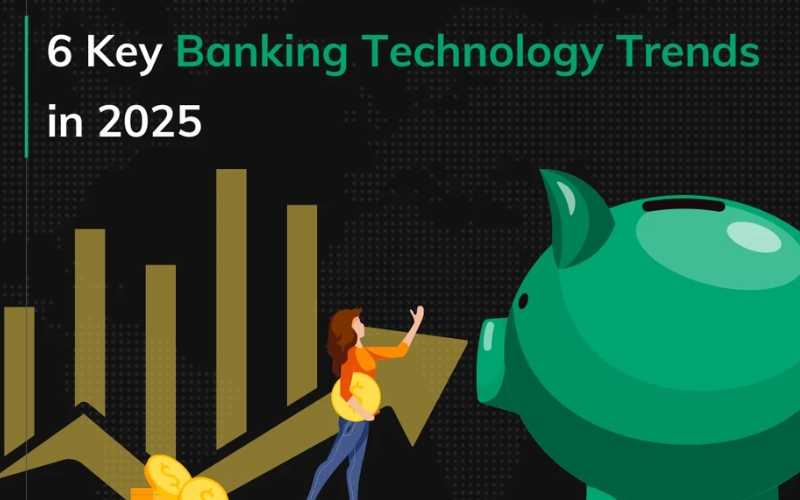How Banks Are Protecting Your Data to evolve in the digital age, banking security has become more critical than ever. With the rapid rise of online banking, mobile apps, and digital financial services, the threat landscape for cyberattacks has expanded. The year 2025 will mark a pivotal point in how banks protect sensitive data and ensure the security of financial transactions. As financial institutions adopt more advanced technologies to enhance security, they are also faced with the ongoing challenge of staying ahead of increasingly sophisticated cyber threats.
In this article, we will explore the security measures banks are adopting in 2025 to protect their customers’ data, how technology is reshaping banking security, and the future of cybersecurity in the financial sector.
1. The Growing Importance of Data Security in Banking
How Banks Are Protecting Your Data the banking sector because it directly affects trust. Customers rely on banks to protect their personal and financial information, making it imperative for institutions to implement robust security protocols. Data breaches or financial fraud can result in severe reputational damage, loss of customer trust, and significant financial penalties.
Several factors contribute to the heightened focus on data security in banking:
- Increasing Cyber Threats: Cyberattacks are becoming more sophisticated, with hackers leveraging advanced techniques to breach bank systems and steal sensitive data.
- Regulatory Compliance: Governments worldwide are implementing stricter regulations, such as the General Data Protection Regulation (GDPR) in Europe and California Consumer Privacy Act (CCPA) in the United States, to ensure data protection and privacy for consumers.
- Customer Expectations: Customers expect banks to safeguard their financial data, especially as digital banking services expand, requiring an even more robust security infrastructure.
2. Advanced Security Measures Banks Are Adopting in 2025
To combat the growing risks, banks are adopting advanced security technologies and protocols to protect their customers’ data. Here are some of the most prominent security trends banks will rely on in 2025:
A. Artificial Intelligence and Machine Learning for Threat Detection
How Banks Are Protecting Your Data advancements in banking security is the integration of artificial intelligence (AI) and machine learning (ML) to detect and prevent fraudulent activities. AI-based systems are capable of analyzing vast amounts of data in real time, recognizing unusual patterns or anomalies in customer behavior, and identifying potential threats before they escalate.
- Fraud Detection: AI algorithms continuously monitor transactions, flagging suspicious activities such as unusual spending patterns or multiple login attempts. These systems can instantly freeze accounts or send alerts to customers, minimizing the risk of fraud.
- Threat Intelligence: Machine learning models can be used to identify emerging threats based on patterns from historical data, allowing banks to adapt quickly to new cybersecurity challenges.
- Automation: Automated response mechanisms powered by AI can immediately block potentially fraudulent transactions, allowing for faster, more effective mitigation of risks.
B. Multi-Factor Authentication (MFA) and Biometric Security
Traditional password-based security systems are becoming less reliable due to the growing sophistication of cyberattacks. In 2025, banks are increasingly adopting multi-factor authentication (MFA) and biometric authentication to enhance security and make it harder for unauthorized users to access sensitive accounts.
- MFA: This method requires users to provide two or more verification factors, such as a password, a fingerprint, or a one-time passcode sent via SMS or email. MFA significantly reduces the likelihood of unauthorized access, even if a password is compromised.
- Biometrics: Fingerprint scans, facial recognition, and even voice recognition are becoming common forms of biometric authentication for customers accessing their accounts via mobile banking apps or ATMs. This technology is increasingly being integrated into banking apps to improve security while offering a more seamless user experience.
- Transparency and Immutability: Once a transaction is recorded on a blockchain, it cannot be altered or tampered with, making it nearly impossible for hackers to manipulate transaction data.
- Decentralization: By using a decentralized network, blockchain eliminates the single point of failure that centralized banking systems often rely on. This increases the overall resilience of banking infrastructures against cyberattacks.
- Enhanced Security: Blockchain transactions are cryptographically encrypted, providing a high level of security. Banks are adopting blockchain for secure cross-border payments, improving both transparency and efficiency.
